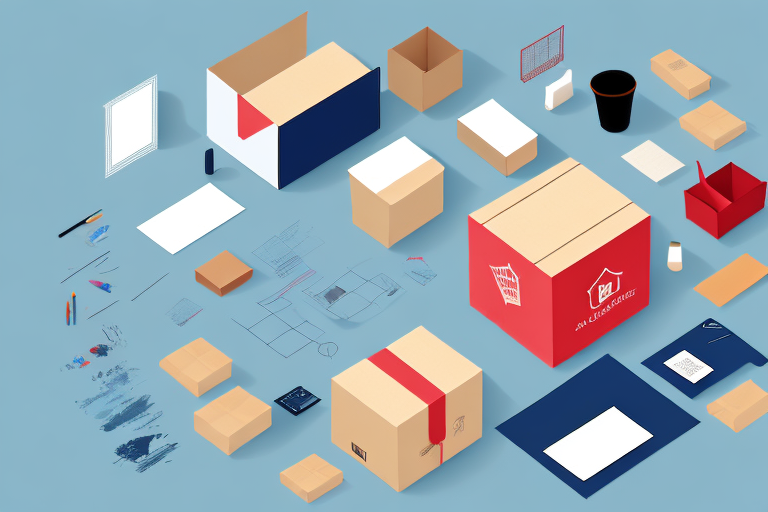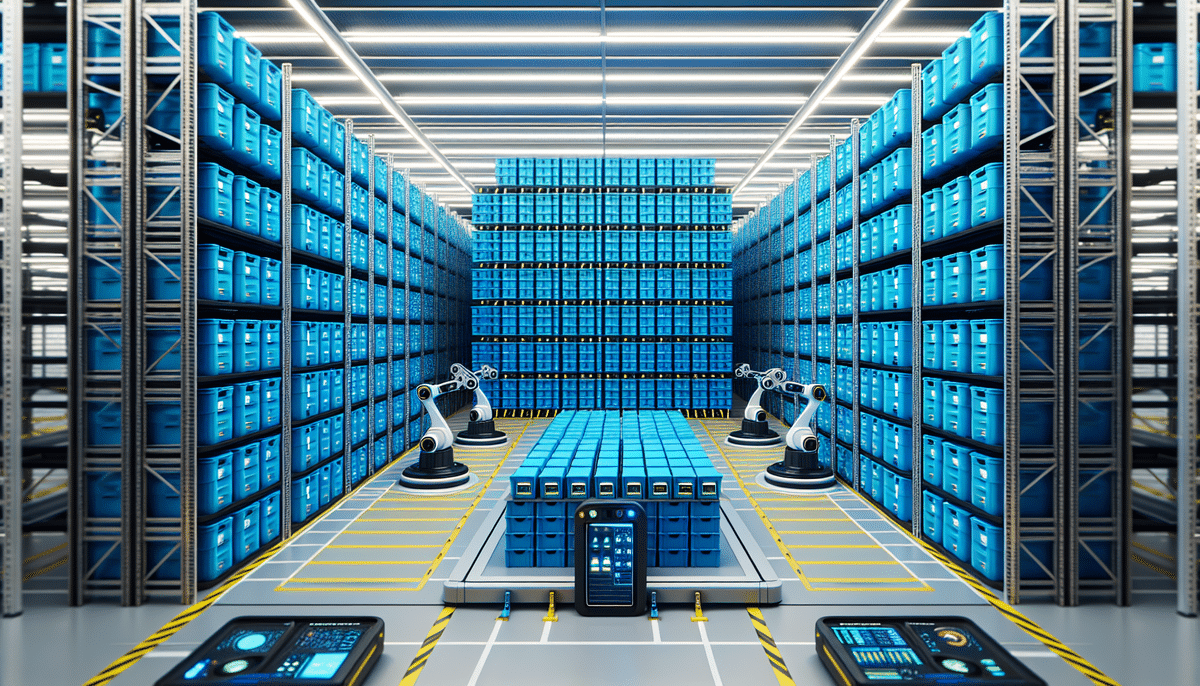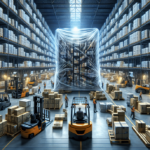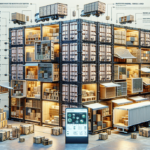The Benefits of Using Box-Ups for Shipping and Storage
In the realm of shipping and storage, traditional packaging methods like cardboard boxes and plastic crates have been standard for years. However, a transformative solution known as box-ups is reshaping the industry. Box-ups are versatile, reusable, and eco-friendly, making them suitable for a variety of applications from transportation to long-term storage. This article delves into what box-ups are, their operational mechanisms, and the advantages they offer over conventional packaging methods.
What Are Box-Ups and How Do They Work?
Box-ups are specialized containers engineered for efficient stacking, shipping, and storage. Available in diverse sizes, shapes, and materials such as plastic, metal, and wood, box-ups are modular by design. This modularity allows them to be securely stacked, creating a compact and organized storage system. Their lightweight nature facilitates easy transportation across different locations.
Industries including retail, manufacturing, and logistics frequently utilize box-ups for their ability to securely store and transport products. Customized features like dividers, foam inserts, and locking mechanisms enhance the protection and security of the contents, making box-ups adaptable to various needs.
Moreover, many box-up manufacturers prioritize sustainability by using eco-friendly materials and production processes. Reusable designs not only minimize waste but also offer long-term cost savings, presenting a greener alternative to traditional cardboard packaging.
The History of Box-Ups: From Concept to Reality
The inception of box-ups dates back to the mid-2000s when designers and engineers sought alternative packaging solutions adaptable to multiple applications. The initial versions were cardboard-based, serving as temporary storage for moving companies and logistics firms. Advancements in technology and materials expanded their use to shipping delicate electronics and storing industrial equipment in warehouses.
Today, box-ups are integral to the packaging industry, available in a wide array of sizes and materials to meet diverse requirements. They are not only used for storage and shipping but also serve as effective display units in retail environments. Companies leverage custom-designed box-ups for branding and marketing, showcasing their versatility and durability across various business sizes. Continuous innovations in materials and design keep box-ups at the forefront of packaging solutions.
The Advantages of Using Box-Ups Over Traditional Packaging Methods
Box-ups present several advantages compared to traditional packaging like cardboard boxes and plastic crates:
- Durability: Box-ups are built to withstand repeated use without significant wear and tear, unlike cardboard which can degrade quickly.
- Lightweight: Their lightweight nature makes them easier to transport and handle, reducing labor costs and effort.
- Modularity: The ability to stack box-ups securely optimizes storage space, enhancing overall efficiency.
- Customization: Box-ups can be tailored to fit specific products, minimizing the need for additional packing materials and ensuring maximum protection.
- Cost-Effectiveness: Reusability eliminates the recurring cost of purchasing new packaging materials, offering long-term savings for businesses.
These benefits not only streamline operations but also contribute to more sustainable and cost-effective business practices.
How Box-Ups Help Reduce Shipping Costs and Increase Efficiency
Box-ups play a pivotal role in lowering shipping expenses and boosting operational efficiency:
- Space Optimization: Their stackable design allows more products to be shipped simultaneously, reducing the number of shipments needed and consequently lowering transportation costs.
- Reusable Nature: The durability and reusability of box-ups mean businesses don't need to continuously buy new packaging, cutting down on material costs.
- Streamlined Packaging Process: Easy assembly and packing with box-ups reduce the time and labor involved, enhancing overall productivity.
According to a 2023 ShipScience Research Report, businesses using box-ups have reported up to a 30% reduction in shipping costs and a 25% increase in packaging efficiency.
Additionally, the eco-friendly aspect of box-ups aligns with the growing emphasis on sustainability, enabling businesses to meet environmental goals and attract eco-conscious consumers.
The Environmental Benefits of Using Box-Ups for Shipping and Storage
Box-ups offer significant environmental advantages over traditional packaging:
- Reusability: By being reusable, box-ups drastically reduce the volume of packaging waste.
- Recyclable Materials: Many box-ups are made from recyclable materials like recycled plastic or sustainable wood, further minimizing their environmental footprint.
- Lower Carbon Footprint: Sustainable materials and efficient transportation usage contribute to a reduced carbon footprint compared to single-use packaging options.
- Reduced Transportation Emissions: Their collapsible and stackable design optimizes shipping space, leading to fewer transportation trips and lower fuel consumption.
Implementing box-ups can help businesses significantly reduce their environmental impact. For instance, a study by ShipScience's 2023 Sustainability Report highlights that companies switching to box-ups have decreased their packaging waste by 40% and transportation emissions by 20%.
Tips for Choosing the Right Box-Up Size and Type for Your Needs
Selecting the appropriate box-up is crucial for maximizing benefits:
- Assess Content Requirements: Consider the size, weight, and fragility of items to determine the suitable box-up size and material. For delicate items, opt for reinforced plastic boxes with protective inserts.
- Evaluate Material Properties: Choose materials that offer the best protection and sustainability for your specific needs. Recycled plastics or bamboo-based box-ups are excellent for environmentally conscious businesses.
- Customization Features: Look for box-ups that offer customizable features like adjustable dividers or locking mechanisms to enhance protection and organization.
- Environmental Impact: Prioritize box-ups made from sustainable or recycled materials and those designed for multiple reuse cycles to minimize environmental impact.
By carefully selecting box-ups based on these criteria, businesses can enhance their shipping and storage efficiency while supporting sustainable practices.
How to Properly Pack and Seal a Box-Up for Safe Shipping and Storage
Proper packing and sealing are essential to ensure the safety and integrity of your products during transit:
- Use Appropriate Packing Materials: Incorporate materials like bubble wrap or packing peanuts to cushion items and prevent movement within the box-up.
- Seal Securely: Utilize high-quality packing tape to reinforce all seams and edges, ensuring the box-up remains intact during transportation.
- Distribute Weight Evenly: Place heavier items at the bottom and lighter items on top to maintain balance and prevent tipping.
- Label Clearly: Clearly label the box-up with contents, handling instructions, and destination address to facilitate proper handling throughout the shipping process.
Implementing these steps can significantly reduce the risk of damage and ensure that your items reach their destination safely. For detailed guidelines, refer to the ShipScience Packaging Guidelines.
Common Mistakes to Avoid When Using Box-Ups for Shipping and Storage
Avoiding common pitfalls can enhance the effectiveness of box-ups:
- Overloading: Exceeding the weight capacity of box-ups can lead to structural failure. Always adhere to weight guidelines to maintain integrity.
- Poor Labeling: Inadequate or unclear labels can result in mishandling. Ensure all box-ups are properly labeled with essential information.
- Insufficient Packing: Neglecting to use adequate packing materials can cause items to shift and sustain damage. Always use appropriate cushioning materials.
- Ignoring Customization: Failing to customize box-ups for specific items can reduce protection. Utilize available customization features to enhance safety.
By steering clear of these mistakes, businesses can maximize the benefits of box-ups and ensure smooth shipping and storage operations.
Real-Life Examples of Companies That Have Successfully Adopted Box-Ups in Their Operations
Numerous companies have integrated box-ups into their operations, realizing substantial benefits:
- Furniture Retail Chain: Implemented box-ups to reduce shipping costs by 25% and accelerate delivery times by 15%, enhancing customer satisfaction.
- Logistics Firm: Streamlined warehouse operations with box-ups, resulting in a 30% increase in storage efficiency and a 20% reduction in environmental impact.
- Food Delivery Service: Adopted standardized box sizes, optimizing delivery routes and decreasing fuel consumption by 18%, while improving delivery speed.
These success stories demonstrate the versatility and effectiveness of box-ups across various industries. For more case studies, visit the ShipScience Case Studies page.
Comparing the Costs of Using Box-Ups vs. Other Shipping and Storage Methods
Evaluating the cost implications of box-ups against traditional packaging reveals significant long-term savings:
- Initial Investment: While box-ups may require a higher upfront cost, their durability and reusability offset this over time.
- Maintenance Costs: Reduced need for frequent repurchasing of packaging materials lowers ongoing expenses.
- Storage Efficiency: Enhanced stacking and space utilization decrease the costs associated with storage space.
A comparative analysis by ShipScience shows that businesses switching to box-ups can achieve up to a 40% reduction in packaging-related costs within the first year.
Future Trends in Box-Up Technology: What's Next?
The evolution of box-up technology is poised to introduce even more innovative solutions:
- Smart Box-Ups: Integration of IoT technology for real-time tracking of contents and location during shipping.
- Eco-Friendly Materials: Development of box-ups using advanced sustainable materials like bamboo composites and hemp-based plastics.
- 3D-Printed Customizations: Utilizing 3D printing to create bespoke box-ups tailored to specific product dimensions and requirements.
These advancements are set to enhance the functionality, sustainability, and adaptability of box-ups, further solidifying their role in modern shipping and storage solutions.
Conclusion
Box-ups present a versatile, cost-effective, and environmentally friendly alternative to traditional shipping and storage methods. By selecting the appropriate size and type, ensuring proper packing and sealing, and avoiding common errors, businesses can significantly enhance their operational efficiency and reduce costs. As technology and materials continue to advance, box-ups are expected to become even more integral to the packaging industry, driving innovation and sustainability forward.






















